Sturdy Workhorse, or One Trick Pony? Sigma 28-70mm f2.8 Review
For more stories like this, please subscribe to The Phoblographer.
The 24-70mm f2.8 lens is a workhorse lens — but it’s a bit of a Clydesdale. The zoom mixed with the bright aperture tends to create a heavy lens that’s difficult to carry around all day. That’s why Sigma (gasp!) shaved four mm off the traditional workhorse wide-to-mid to craft the Sigma 28-70mm f2.8. The Sigma 28-70mm f2.8 DG DN Contemporary is nearly half the weight of the Sony G Master and even Sigma’s own 24-70mm Art series lens. At 16.6 ounces and $900, the E-Mount lens has several advantages before you even take it out of the box.
Besides those widest 4mm, however, what else did Sigma cut to get to such a low weight and price point? Is the lens still a workhorse — or a pony? Can the lens really compare to the 24-70mm Art lens? The Sigma 28-70mm f2.8 still pleases with some great color and decent bokeh but lacks the edge sharpness of pricier, larger lenses.
Editor’s Note: Typically, when you’re as authentic and large as we are, you work with manufacturers to get products in for review. But it’s also not uncommon to hear threats from brands about changing your coverage to something more positive, even when it doesn’t deserve it. Despite having reviewed the largest database of Sigma prime lenses, Sigma felt we were too harsh on their products. They haven’t even responded to our last email. So we asked LensRentals to help us out. LensRentals, like us, champions authenticity and honesty. We’re elated to have and promote partners like them. And we recommend that if there is any gear that you want to try to go check them out. When you click our links and rent from them, we’ll receive affiliate commissions. And as always, we only recommend the brands we think are truly the best. As the site’s Editor in Chief, I oversee all the site’s reviews. When something is just wrong, we’ll correct it. But our reviewers are rarely wrong. And I encourage everyone to lean into their emotions and feelings while presenting facts. Why am I writing this? Because I believe the photography blogging world needs this level of transparency.
Too Long, Didn’t Read
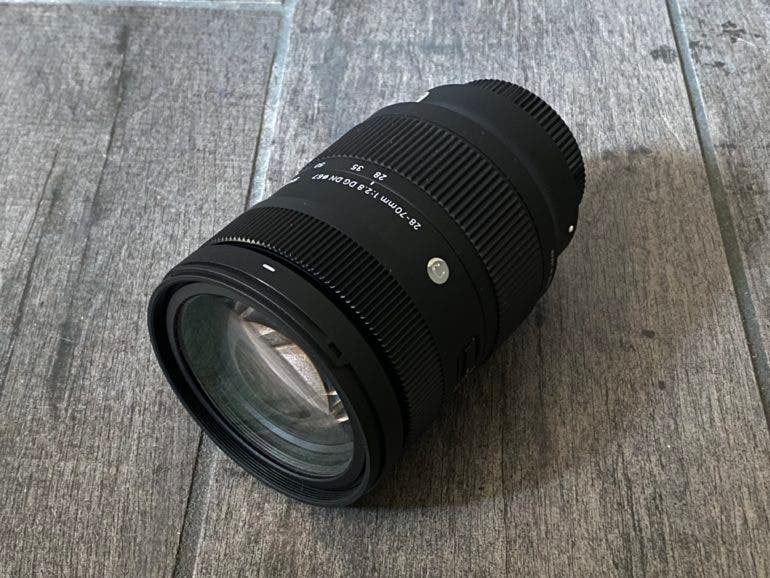
The Sigma 28-70mm f2.8 Contemporary is the lightweight cousin to the Sigma 24-70mm f2.8 Art. But, to cut the weight nearly in half, you lose the widest angle, corner sharpness, full weather sealing, and some distortion control.
Pros and Cons
Pros
- Super lightweight
- Affordable for an f2.8
- Beautiful colors
- Good bokeh for the zoom category
- Versatile zoom range
Cons
- The corners are pretty soft
- Moderate line distortion at the widest angle
- Occasional autofocus misses in shadows and fast action
- The weather-sealing is only at the mount
Gear Used
I used the E-Mount Sigma 28-70mm f2.8 with the Sony A7 III. As a sample provided by LensRentals, I used a protective UV filter with about half the shots. The lens is also available in L-mount (not tested).
Innovations
Is taking 4mm off the focal length of a traditional lens innovative? I don’t know, but the size of this lens still feels like a step in the right direction. It’s less than two ounces shy of being a whole pound lighter than the Sony 24-70mm f2.8 G Master lens. However, also keep in mind that the Sony G Master lens is fully weather-sealed.
Tech Specs
Sigma lists the following tech specs for the 28-70mm f2.8 DG DN Contemporary:
- Lens Construction: 12 groups, 16 elements (2 FLD elements, 2 SLD elements, 3 aspherical elements)
- Angle of View: 75.4°~34.3°
- Number of Diaphragm Blades: 9 (rounded diaphragm)
- Minimum Aperture: F22
- Minimum Focusing Distance: 19 (W)-38 (T)cm / 7.5(W)-15 (T)in.
- Maximum Magnification Ratio: 1:3.3 (W) – 1:4.6 (T)
- Filter size: φ67mm
- Dimensions (Diameter × Length)
- L-Mount: φ72.2mm×101.5mm / φ2.8in.×4.0in.
- Sony E-Mount: φ72.2mm×103.5mm / φ2.8in.×4.1in.
- Weight
- L-Mount: 470g / 16.6oz.
- Sony E-Mount: 470g / 16.6oz.
- Lens Hood (LH706-01) supplied
Ergonomics
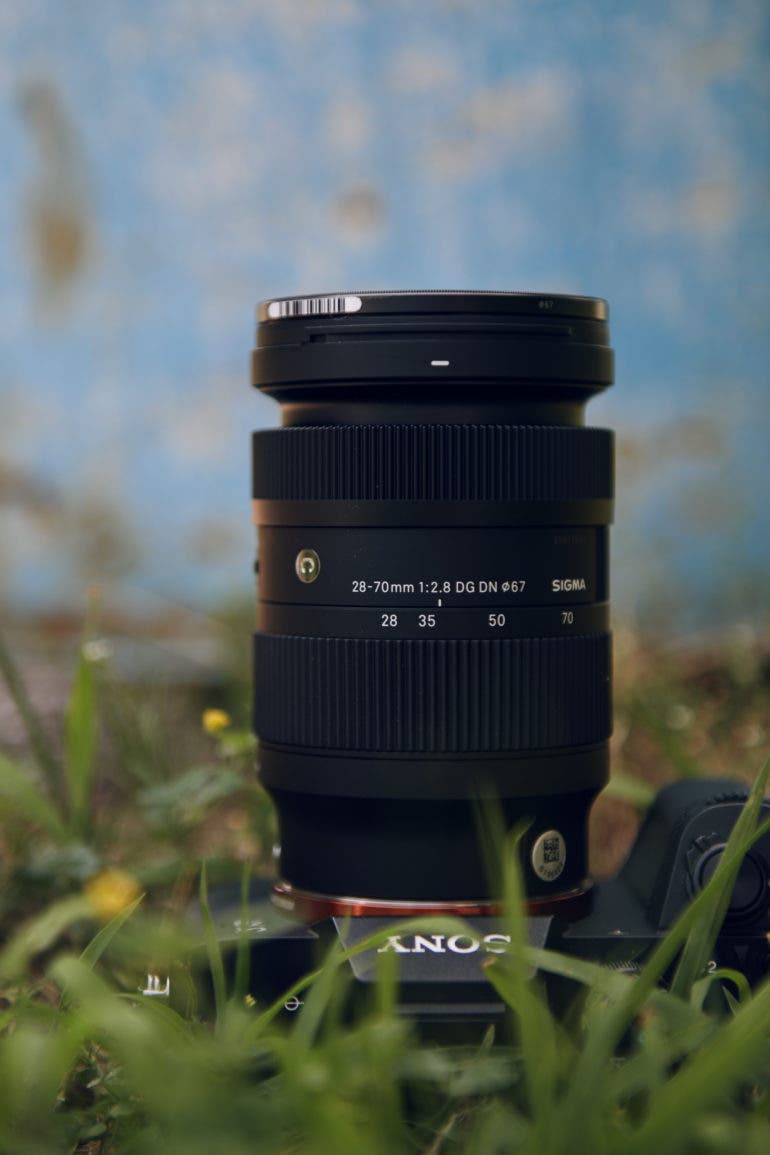
The Sigma 28-70mm f2.8 is a lens that feels made for mirrorless. By cutting off 4mm on the wide-angle, Sigma crafts a workhorse lens that doesn’t feel like a workhorse. It’s nearly half the weight of Sony’s 24-70mm G Master at 14.6 ounces lighter. It’s still smaller than the Sigma 24-70mm f2.8 Art lens at 12.8 ounces lighter. I use a 24-70mm f2.8 on a DSLR shooting weddings and by the end of the day, I’m sore. I’m jealous of how light this lens feels.

While light, the 28-70mm still feels great in the hands. The zoom has a pretty typical set-up with two control rings and a focus switch. The front-most ring, for focus, is narrower with a finer texture. The second ring, the zoom, is larger with a slightly different texture. I’m accustomed to a much larger zoom, so I reached for the wrong ring a few times before retraining my reflexes for a shorter optic.
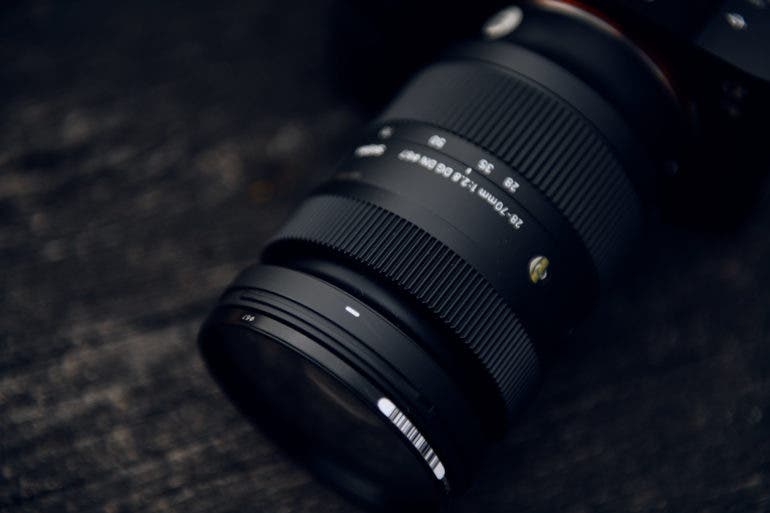
The only control besides the two rings is the auto to manual focus switch. I did accidentally pull the switch when pulling this lens out of my bag once. Beginners will want to familiarize themselves with that switch to troubleshoot if the lens suddenly doesn’t focus. There’s no focal length scale, but Sony’s own 24-70mm G Master doesn’t have one either. (It does, however, have a shortcut button, though a lot of photographers never use this feature).
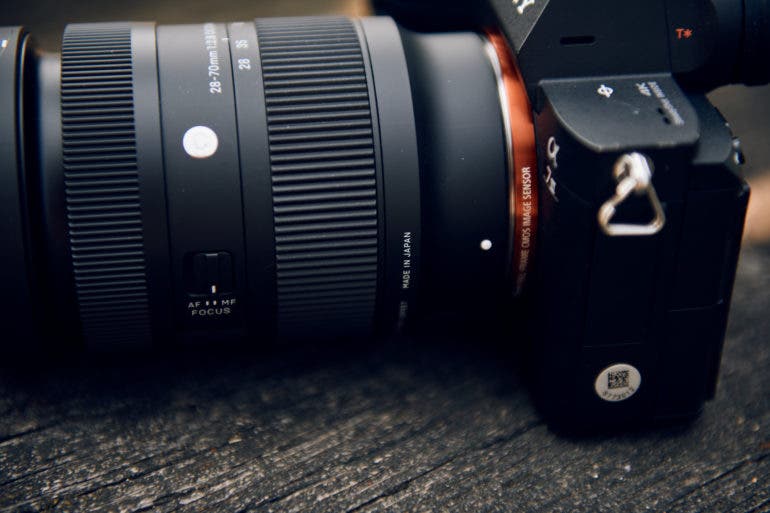
The lens has a flat front that accepts 67mm filters. It ships with a plastic lens hood.
Build Quality
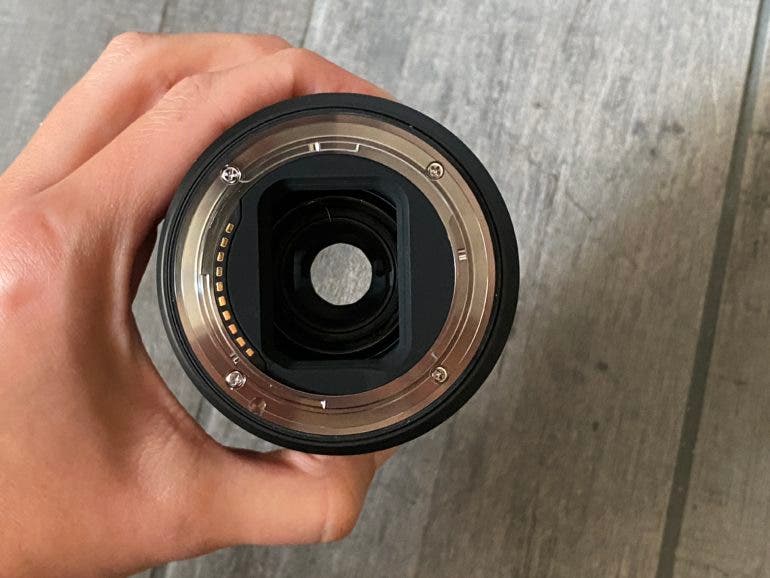
The Sigma 28-70mm f2.8 is dust and splash-resistant only at the mount, with a coating on the front to help repel water and oil. For all intents and purposes, you should really be careful with this lens. Despite that, I gave it a good splash with some dirty river water and the lens and camera kept shooting.
I did, however, accumulate some debris on the sensor of the a7 III while using the lens. Was it a result of the splash? Did it blow in while changing lenses? Or is that weather-sealing at the mount imperfect? I can’t say with 100 percent certainty. I did clean the sensor and take the camera back outside, shot for a bit, and left the lens mounted for 12 hours. I didn’t get any debris on the sensor that time. It’s difficult to say if the dirty sensor was the fault of Sigma — or Sony. We’ve used Sony’s fully weather-sealed lenses on the a7 III and ended up with dirty sensors, so it’s certainly possible — and maybe even likely — that Sony is the guilty party here.
This lens’ goal in life is to be light. There’s a bit of a plastic feel to it, especially when compared to the feel of a fully weather-sealed lens. It’s certainly not horrible, but it’s no Sony G Master either.
Autofocus

For action, the Sigma lens was slightly slower than other lenses that I’ve used with the a7 III. With this body, I expect a 15 percent miss rate. With this lens, subjects at a running pace missed 20 to 25 percent of the time. This was in continuous autofocus, with eye AF on. It’s not too far off from what I’d expect, but if you want the fastest autofocus performance, you’re going to want a Sony or Tamron.
The Sigma 28-70mm f2.8 didn’t throw out any major autofocus red flags as I was working with the lens. My portrait and lifestyle-type shots were seldom soft and I rarely seemed to have to wait for the lens to lock focus. Even in limited light, the lens locked on quickly.
The other scenario that really tested this Sigma’s autofocus was backlighting. I could focus on the well-lit side of the face just fine. In the shadows, however, the lens did more hunting back and forth. Left on continuous autofocus, the focus jittered in and out on the shadowy eye, but locked in place and stayed there on the side that had some light reflecting back In a black silhouette, the focal point will need to be placed on the edge of the subject. But, that’s no surprise, mirrorless systems tend to need at least a little bit of contrast in the area of the focal point.

The lens can focus as 7.5 inches from the front of the lens. That, of course, isn’t macro, but it will allow for some nice close-up portraits and working with some smaller objects.
As a budget workhorse lens, the autofocus isn’t bad. I’ve seen better, but you only lose maybe 10 percent compared to other lenses. The scenarios that missed the mark are the toughest shots — backlight shadows and action heading straight towards the camera. In real life shots, when you’re not intentionally shooting the most difficult subjects, you’ll get a bit better hit rate.
Ease of Use
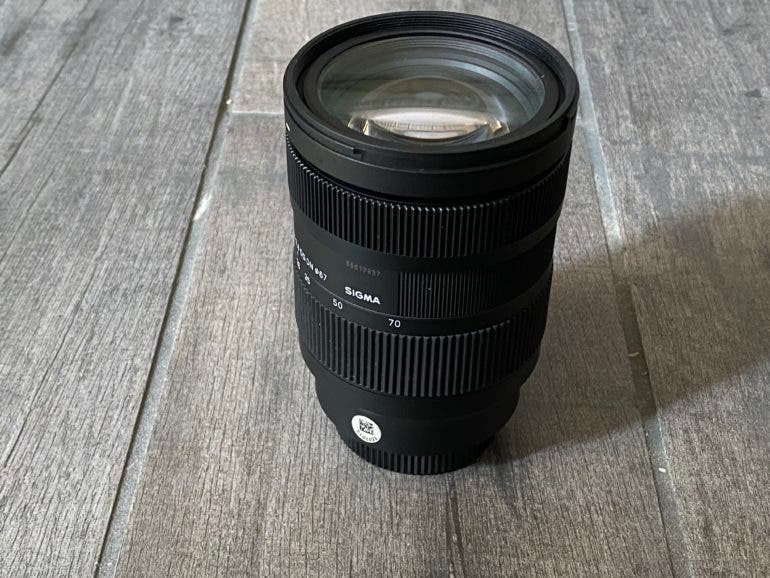
With minimal controls and a reasonable price, this zoom lens is going to be loved among beginners. There are just two dials and an autofocus switch to learn how to use. Beginners will want to familiarize themselves with the focus switch, in case they accidentally adjust it in the bag. The simple controls and lower price point is going to make this lens a good option for newbies.
Image Quality
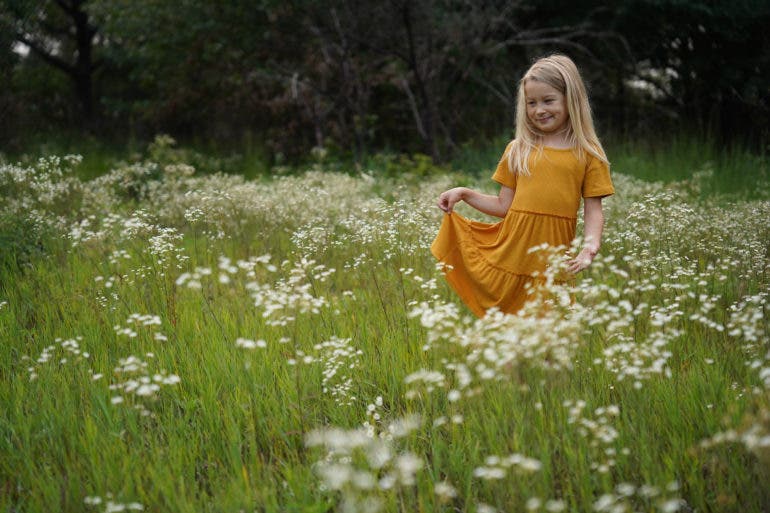
Did Sigma cut off more than just 4mm to get to a more compact, affordable workhorse zoom? The Sigma 28-70mm f2.8 has lovely deep, often golden colors. Plus, at the long end, photographers will get some great, soft bokeh. But, the edges aren’t sharp at all and there’s some barrel distortion and vignetting to contend with.
Bokeh

The bokeh from this lens doesn’t look like it’s coming from a budget-friendly zoom. If you use the full length of the lens and get in close, the subject really pops off a nice soft background. Of course, it’s nothing like a brighter prime, but it’s quite good for the category.
Bokeh balls are also easy to create. And, the things that many photographers complain about aren’t there. There’s no onion ring or soap bubble effect. Bokeh has nice soft edges.
Sharpness

At the center, the lens gets some great sharpness. It has that ideal balance where the eyes are sharp, but you don’t see every single pore.
But, looking at the edges and corners, it’s a different story. The edges are quite soft, both at the wide end, the telephoto and at 50mm. If you go outside of those Rule of Thirds lines, the subject is going to be a bit soft. Corner sharpness doesn’t really improve until you start hitting f5.6. Corner softness on a zoom is common, and, up until a few more modern mirrorless lenses, impossible to get away from. But, I’ve seen more and more edge-to-edge sharpness lately — unfortunately, this isn’t one of them.
Lens Character
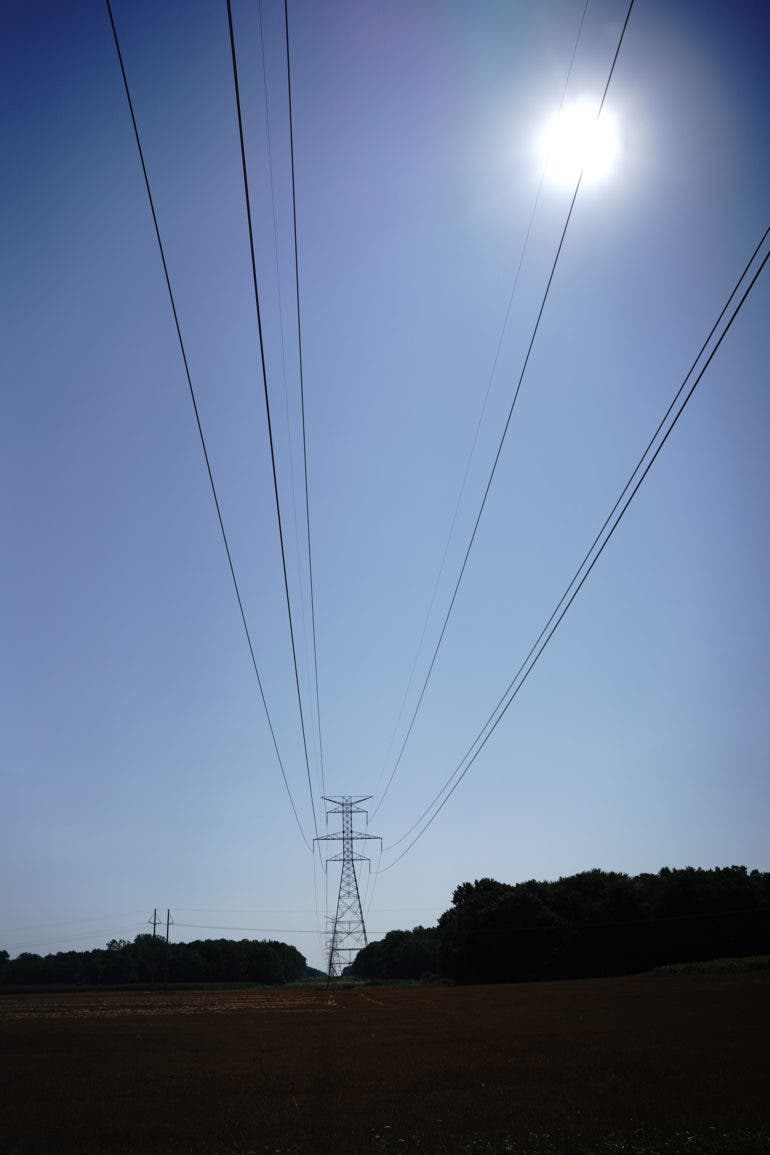
The Sigma 28-70mm f2.8 has some moderate pincushion and barrel distortion on the wide and telephoto ends. It’s not really obvious until you shoot something with straight lines towards the edges of the image. The wide-angle has the most bending at the edges. It can be corrected in post, but it’s there.
Pointed at direct sun, the Sigma will get a bit of fun starburst flare. If you adjust the angle of the glass a bit, you can get clean white flare, or get some dots of rainbow colors thrown in the mix. I couldn’t find chromatic aberration, much to my relief.
The lens also produces some light vignetting. It’s light enough to edit out if you don’t like it. It draws the eye in some shots, but in others looks out of place.
Color Rendering

I love the color coming from the Sigma 28-70mm f2.8. The colors are just a bit deeper but don’t fall into over-saturation. I felt like this lens captured more gold hues and, as a photographer who regularly edits more of that gold glow into my photos, I loved that. Color is typically one of my favorite things about Sigma lenses, and this one is no exception.
How does the image quality compare? Sigma 24-70mm f2.8 Art vs Sigma 28-70mm f2.8 Contemporary
Sigma claims that the optical performance “rivals” the similar Art line lens. After chatting with Editor-in-Chief Chris Gampat, who had the Art lens in his possession, I think this is mostly the case. Both lenses have some distortion at the wide-angle and some vignetting. They both deliver that nice rich color. And, both have a bit of corner softness.
But, I do think the Contemporary has more corner softness than the Art lens. On the flip side, the Art lens feels a little sharper at the center, which can highlight more skin imperfections. Either way, with the edge distortion, with both lenses you’re going to want to keep subjects away from the corners.
Extra Image Samples
From day one, the Phoblographer has been huge on transparency with our audience. Nothing from this review is sponsored. Further, lots of folks will post reviews and show lots of editing in the photos. The problem then becomes that anyone and everyone can do the same thing. You’re not showing what the lens can do. So we have a whole section in our Extra Image Samples area to show off edited and unedited photos. From this, you can make a decision for yourself.
Edited






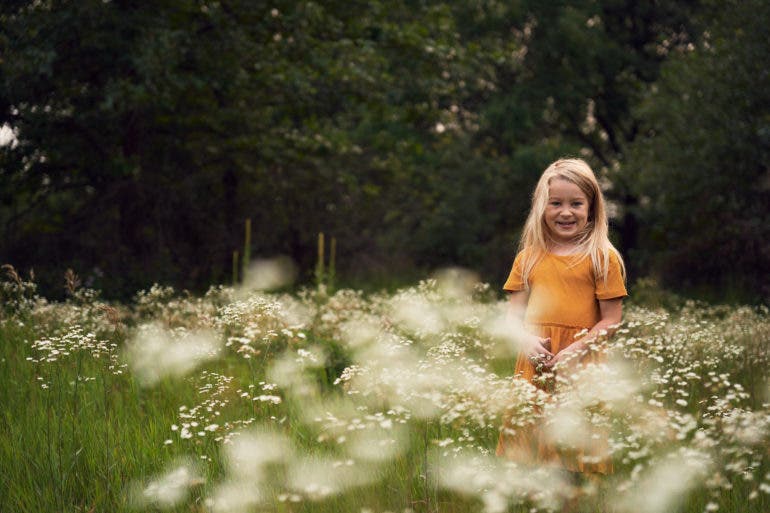
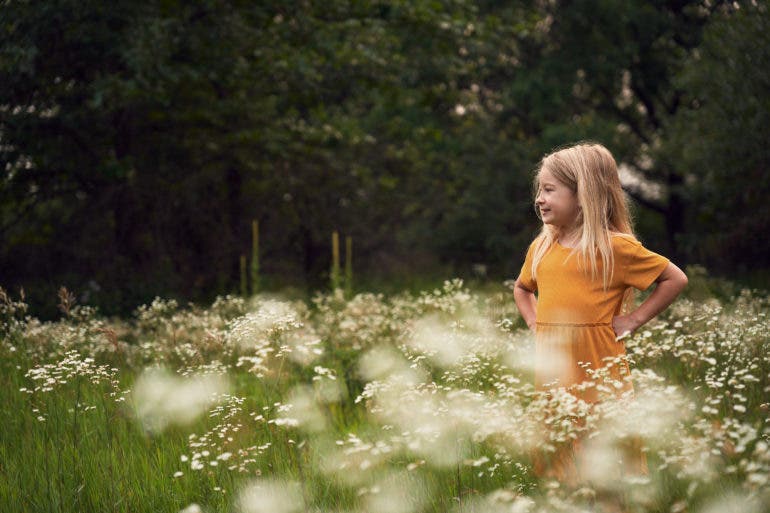







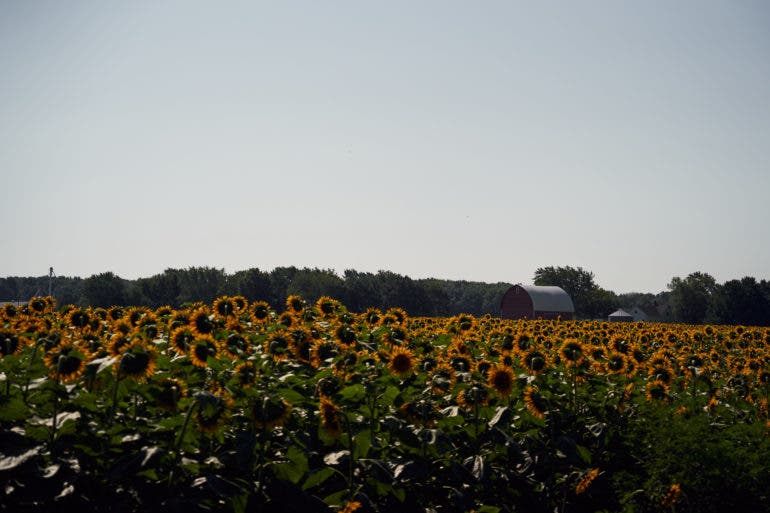
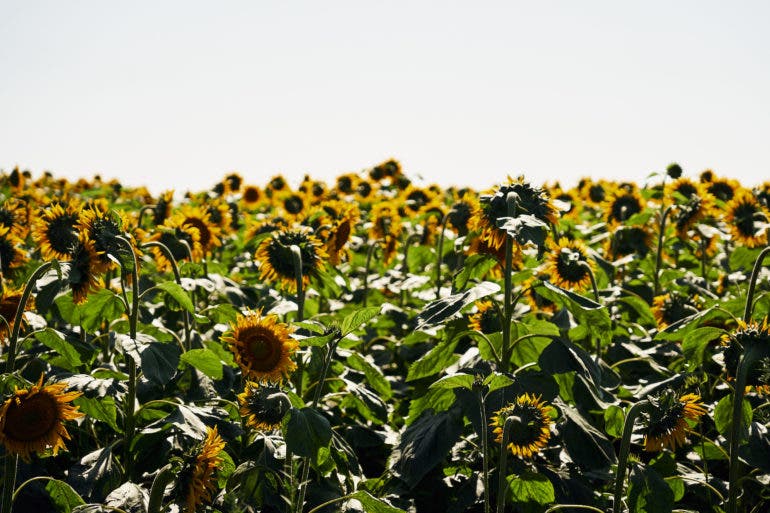
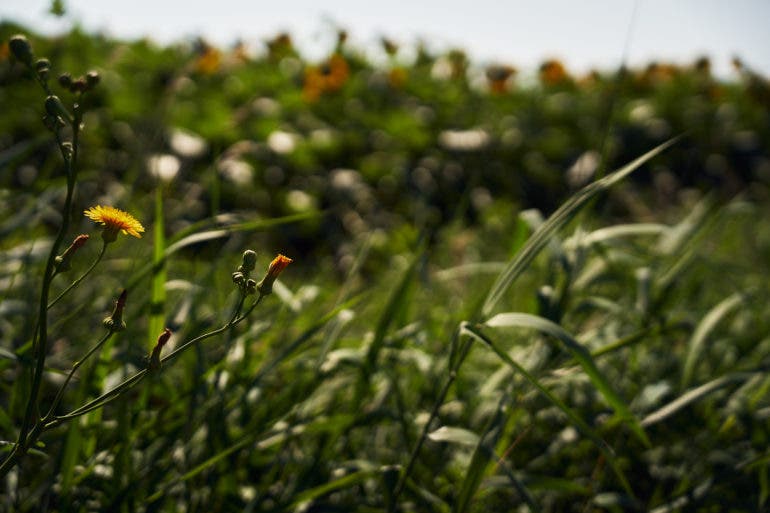

Unedited




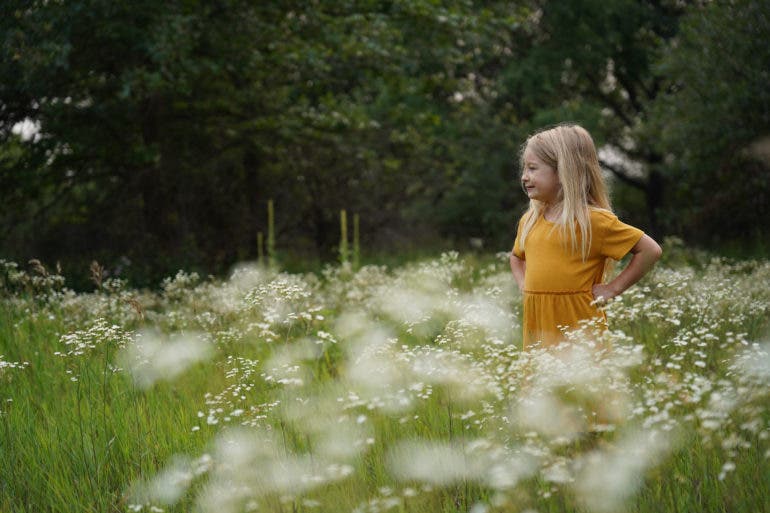




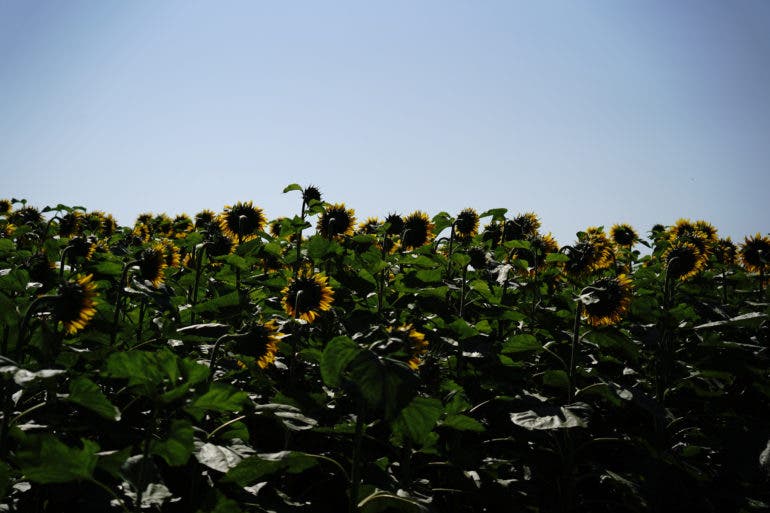



Conclusions
Likes
- The Sigma 28-70mm f2.8 is so light. I want to carry it around all day.
- Most f2.8 zoom lenses are well over $1,000 and often over $2,000. $900 is a great price.
- The colors coming from this lens are great — rich, without being too saturated.
- For a zoom, you can get some pretty nice bokeh.
- The wide-angle to mid telephoto is a great versatile zoom range and I didn’t really miss the extra 4mm on the wide end.
Dislikes
- The corners and edges are soft.
- At the wide-angle, there’s some moderate barrel distortion.
- Autofocus is slightly slower than similar lenses from Sony and Tamron.
- The weather-sealing is only at the mount.

The Sigma 28-70mm f2.8 DG DN Contemporary is the lens that I wish I had as a beginner. The workhorse zoom balances a low price with a bright aperture, rich colors, and a lightweight build. I didn’t feel like I was carrying around an f2.8 zoom. And when I looked at my images, I didn’t want to color edit many of them.
When I first picked up the 28-70mm, it just increased the itch to switch to a lighter system from my DSLR. But, as a wedding photographer looking for my next camera system, the corners are a bit too soft for me. The wide-angle distortion is also a bit much to work with. I want to switch systems not because my camera body is inferior, but because some mirrorless lenses are superior. The lens also isn’t fully weather-sealed. While it’s a good lens for beginners and hobbyists, it’s not going to make the cut for my professional work. Of course, it’s also not going to work well for folks who need to shoot in more rugged conditions. I love the lightweight design, but I have trouble with those corners.
Comparing a $900 lens with a $2,000 lens, of course, isn’t exactly fair. The Sigma 28-70mm is for the photographer that doesn’t need super sharp corners or perfectly straight wide angles. It’s for the photographer that would otherwise be shooting a paltry kit lens. It’s for the photographer that wants to pack light without sacrificing aperture. And for that photographer, it’s a good lens. It’s just not a lens that I can see enticing too many pros or pixel peepers. At $900, I can see some hobbyists forgiving those flaws and really enjoying this lens.

I’m giving the Sigma 28-70mm f2.8 DG DN Contemporary three out of five stars.